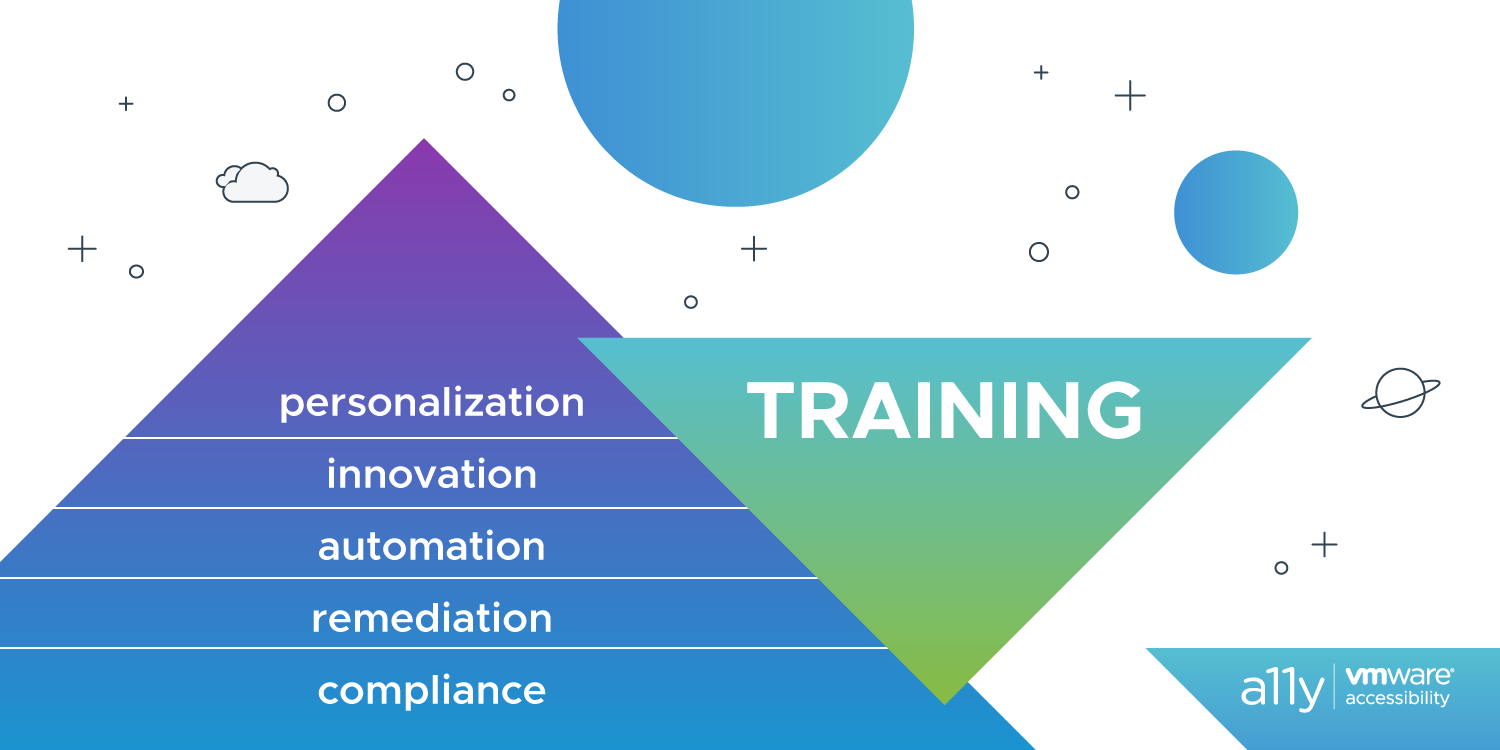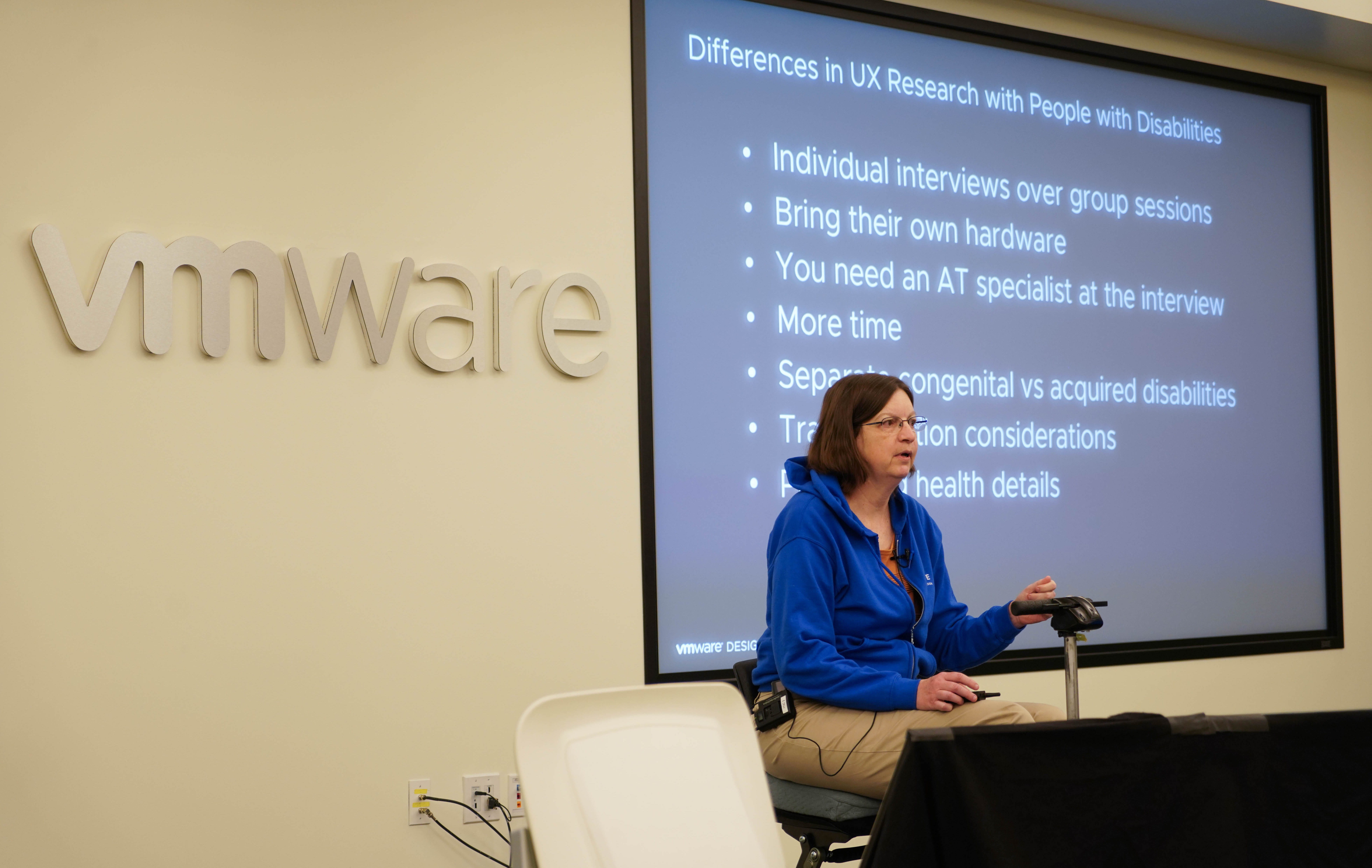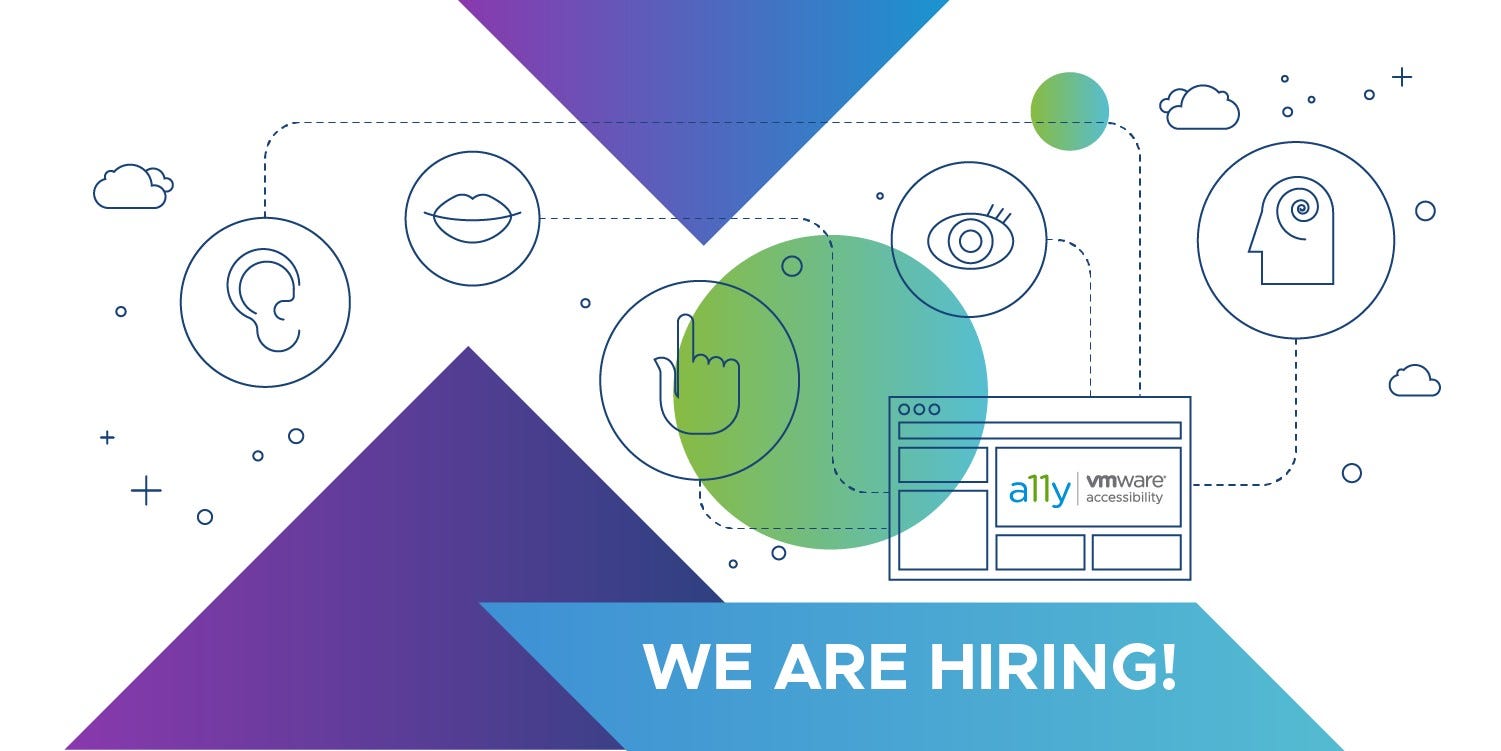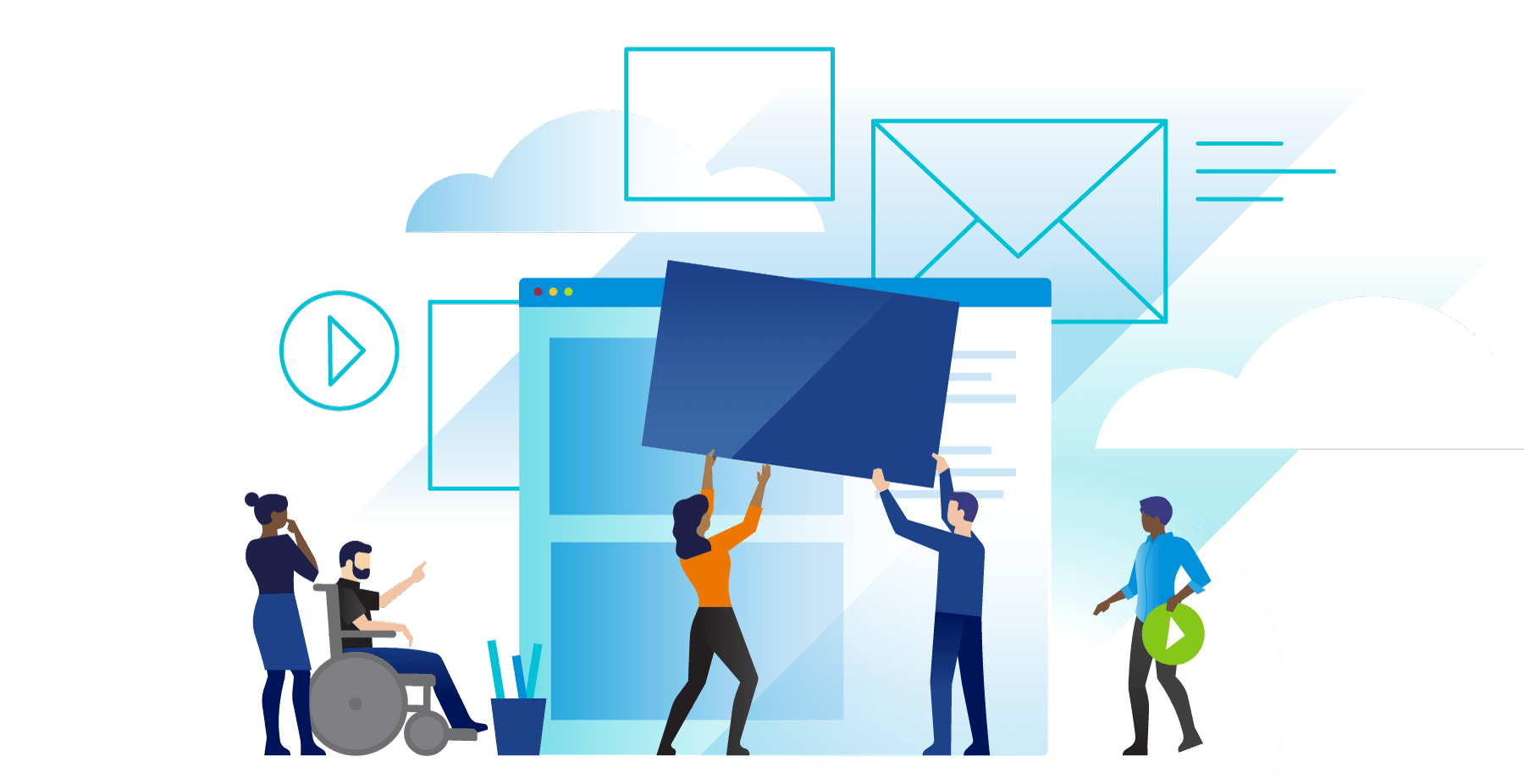VMware is building a new high-impact accessibility program for its customers with disabilities
The number one reason why people with disabilities are frequently unable to use software is the failure of those that own and control the software or content to make it function effectively with assistive technology.
The disability is not the barrier. The barrier exists solely because the software or content fails to account for the wide range of abilities and needs of their users
In January, I joined the VMware Design team as the Head of Accessibility. I frequently describe myself as having the “perfect storm” of a background to be in accessibility. I have degrees in computer science, law, and business, and I have a daughter with significant hearing loss. While I am also a wheelchair user resulting from some congenital issues, it is actually my daughter’s experience that led me to first being an advocate for the deaf, and then to digital accessibility. Most recently, I am known for starting the accessibility program at McDonald’s and running it for 3 years. I hold multiple accessibility certifications.
One experience-led VMware was one of the top three design objectives for this year, and accessibility is at the core of that. As part of its commitment to accessibility, VMware created a Head of Accessibility position, which is part of the design team. We are responsible for all VMware product accessibility across the entire company. We have already started defect logging and gap analysis that will close our accessibility gaps.
W3C’s Web Content Accessibility Guidelines is an international standard the identifies what an organization should (and shouldn’t) do if they want their software to be accessible. The WCAG level VMware is aiming for is 2.1 Level AA.
Why Accessibility?
If you aren’t familiar with accessibility, you may not understand why it is worth a specific effort and department.
- Accessibility is the right thing to do. Eighteen percent of the US population has one or more disabilities. If you don’t specifically code your software to work with assistive technology, you will be excluding that group from participating equally.
- Accessibility is a good business opportunity. If someone with a disability has the choice between an accessible product and an inaccessible one, chances are they will choose the accessible product.
- Accessibility is required under Section 508 and other international laws and regulations. Section 508 is the law that governs sales to the US federal government and anyone who receives federal money (states, municipalities, hospitals, universities, etc.) There has been a great deal of litigation recently over accessibility, and the vast majority of the lawsuits are being decided in favor of the plaintiffs with disabilities.

Six Priorities for a New Accessibility Program
When building a new accessibility program from scratch, there are six priorities that need to be assessed
1. Compliance
The first priority is always compliance, but compliance should not be the ultimate goal. The standard in the US is WCAG 2.0 Level AA. Internationally, new laws seem to be adopting last summer’s update which is WCAG 2.1 Level AA. Most of the new requirements in the update pertain to native apps, but there are a few that relate to HTML pages.
2. Remediation
Once the gap analysis is completed, then the product teams have to fix the bugs. This must be a tightly closed loop, preferably involving a test/retest cycle with retesting involving native users of assistive technology.
3. Automation
The best way to make sure that your product doesn’t backslide into noncompliance is to:
A. Test early and often with both automated and manual reviews using a wide variety of hardware platforms and assistive technology.
B. Make your accessibility program proactive and not reactive. Designers have the power and responsibility to ensure that everyone has access to our creations regardless of any disabilities that might affect them. The great thing about making designs accessible is that it brings a better experience to everyone.
4. Innovation
One of my current favorite accessibility-related subjects is on how to successfully incorporate users with disabilities in UX research. I recently co-presented on this topic with David Fazio at CSUN this year (standing room only) and also presented a VMware-specific version of this talk at SHAPE, an internal VMware design conference. Additionally, the accessibility team hosted a poster session at RADIO (an internal R&D VMware conference) where we talked to literally hundreds of VMware employees about the importance of, and need for, accessibility.
Exchanging ideas with other accessibility experts at conferences is a great way to incorporate other’s thoughts about accessibility into your mindset. Volunteering with accessibility non-profits is another.
5. Personalization
Personalization designed around the needs of people with disabilities are one way to go above and beyond WCAG 2.1 Level AA. It generally takes people with disabilities using assistive technology three to five times longer to complete the same on-line function such as filling out a form as it does people without disabilities. By reducing the amount of required interaction, it is a usability win for people without disabilities, but it is a huge win for people with disabilities.
Training
The reason training is next to the pyramid is it is a process that happens throughout the first five priorities. We’ve been holding training sessions for product managers, designers, engineers, and QE teams who need to understand accessibility and assistive technology to implement it correctly in our products. We have taken advantage of every opportunity to spread the word about accessibility through many different corporate communications. Digital accessibility is one of the three pillars of the VMware Disability Power of Difference group, which I am proud to be co-leading.

I have been speaking about disabilities and accessibility for several years. In November 2018, I started a Medium Blog containing my thoughts on what I perceived to be less commonly-discussed accessibility topics. The world definitely does NOT need more articles on how to write good alt-text (text explanations for non-text elements) or header structure (used to quickly navigate through sections of text). I started this eclectic accessibility blog as a way to hold myself accountable in reaching my writing goals for a book on accessibility I am currently trying to complete. I like writing articles that really geek out on accessibility, but my most widely read articles are the legal summaries that explain the impact of recent accessibility court cases in English.
Accessibility @ VMware
We have already taken enormous steps in getting the word out about accessibility across the company. While there is still room to grow, we have already made great strides in improving accessibility in our Clarity design system.
I am excited to be leading the efforts on bringing accessibility to the core of enterprise design at VMware. It is an unparalleled opportunity to make IT tools more accessible to people with disabilities, which will in turn, increase opportunities for people with disabilities to get IT-related employment. Meanwhile, if you have any commentary about accessibility, feel free to comment below or reach out to us on our Twitter @ VMware Design.

Illustration by Stela Stamenkova
If you’re interested in helping us build the accessibility program at VMware, we’re hiring an Accessibility Operations Lead. Read more about the position here.
In addition, the VMware Design team is looking for talented designers and leaders to help us continue transforming enterprise design. Check out our open positions!

0 comments on “Building a Robust Accessibility Program”